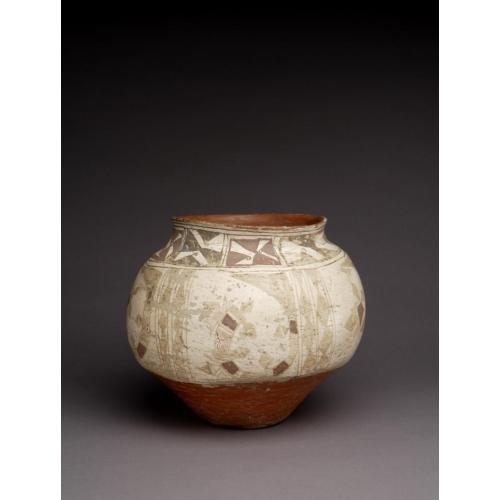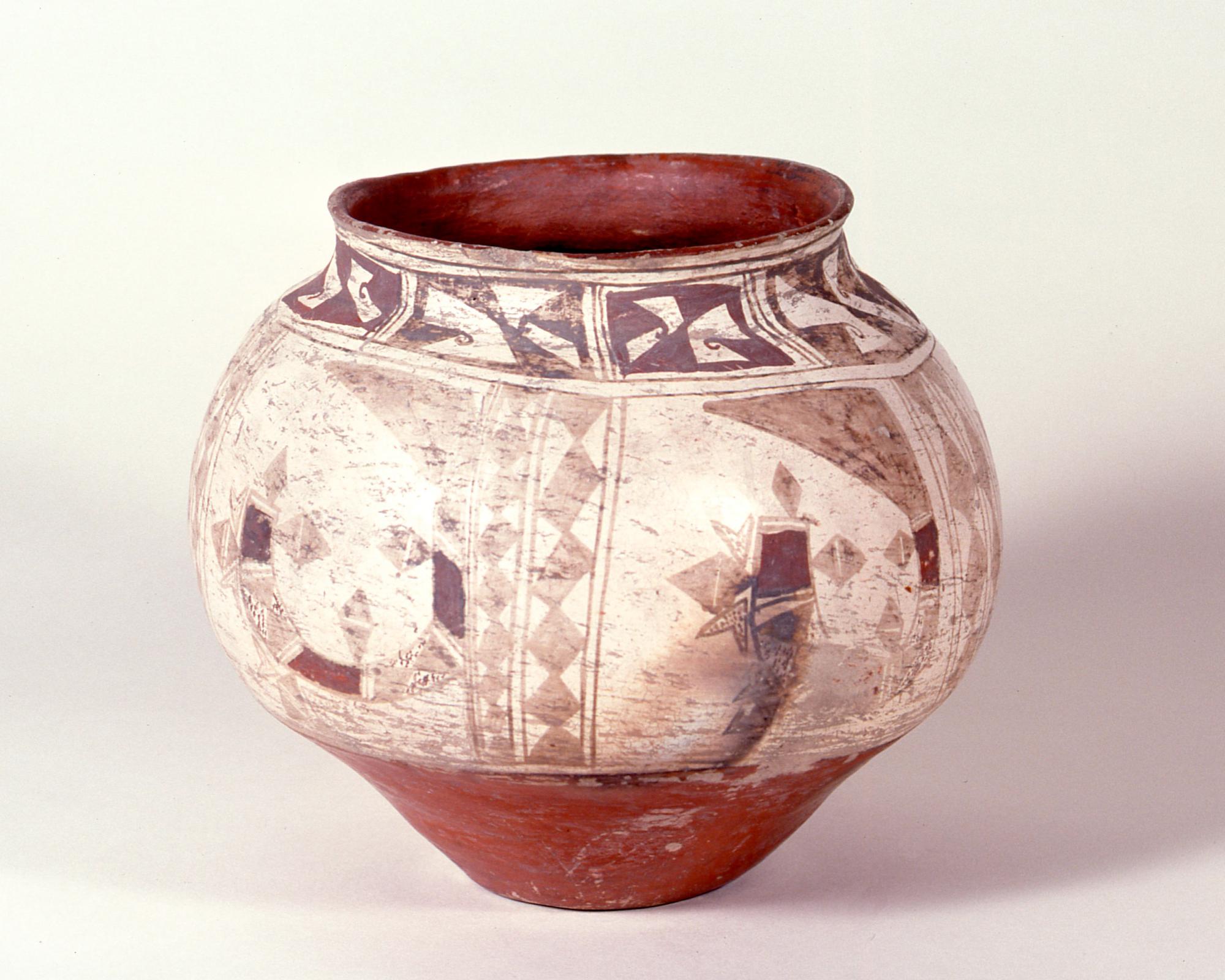
Photograph by Addison Doty. Copyright 2010 School for Advanced Research.
Water jar | K'yabokya de'ele
Date: 1820-1840
Artist or Maker: Unknown
Dimensions:
Dimensions: 25.4 × 29.2 cm (10 × 11 1/2 in.)
Weight: 2.3 kg (5.1 lb.)
Medium: clay | paints
Credit Line: Indian Arts Fund purchase for the permanent collection, 1929.
Place Made:
McKinley County or Valencia County, New Mexico, Southwest, United States, North America
Object Number: IAF.1307
Not on view
Tribal Collection Review RemarksJim Enote and Octavius Seowtewa during collection review visit December 7 and 8, 2010 (Events Record “Collection Review: Zuni Tribe, Review 5”): It is difficult to say for sure if this jar was made at Zuni or Acoma. It has the general form of a water jar (including a concave base), and the common three tiers of design bands. The designs used are not typically Zuni, though it is possible that one of the designs is a kolowisi that repeats in each “house” (design panel). The border line at the rim has a line break in it, which is common on Zuni ceramics and also ceramics by many other Pueblo groups. Since it is not possible to say for sure which community this piece was made at, its Culture of Manufacture field should say both Zuni and Acoma.
The word for a water jar in Zuni is “k'yabokya,” which translates to “water container” in English. The intended use for these jars was to store and carry water, but they could also be used to store other items. .
According to the participants in the Acoma collection review visit June 3-5, 2015 (Events Record “Collection Review: Acoma Pueblo, Review 2”): The participants do not believe this jar is Acoma. Nothing in the design is indicative of Acoma. The paints do not look like those that are used at Acoma
In Collection(s)
Bibliography:
Matte-Paint Pottery of the Tewa, Keres and Zuni Pueblos
- Pg. 244 (text); 245 (photograph)
- Fig. Plate 28, a
The Indian Arts Research Center, in collaboration with Native American community scholars, strives to present accurate collections records. Records may be updated as new information becomes available and is reviewed with the Native American community having cultural affinity to particular items. Please write to iarc@sarsf.org if you have questions or concerns related to the documentation.


